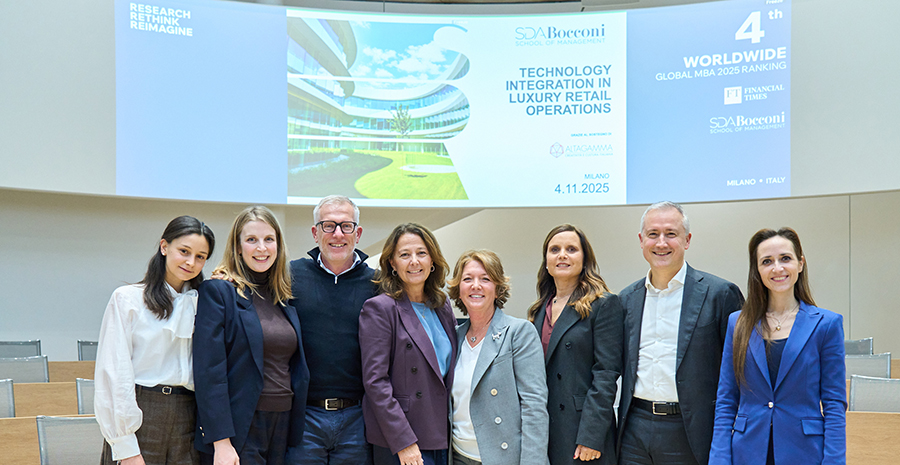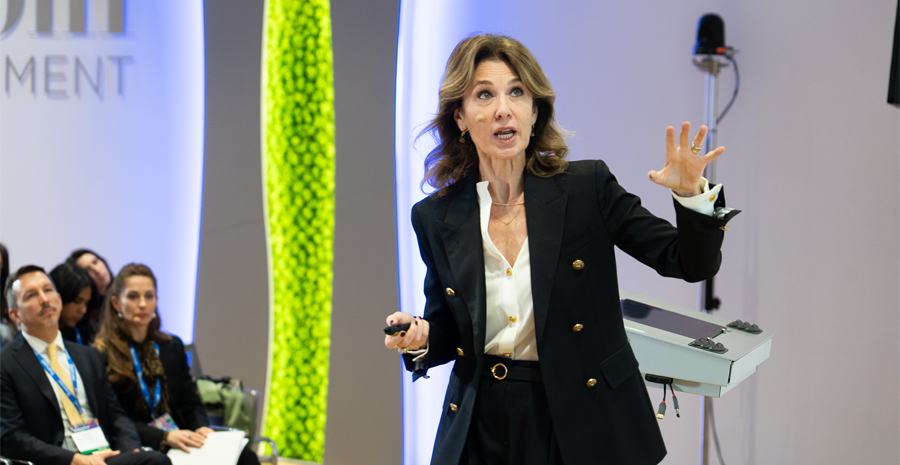Defining La Dolce Vita: the six ingredients of Italian Excellence
Milano, 31 October 2019
Italian Excellence is world famous. From stunning supercars to artistic and fashionable clothing, the best Italian products seem to have an indefinable x-factor of desirability. Across a range of industries, technical skill is combined with aesthetic brilliance to create products that are synonymous with a uniquely Italian quality.
But is it possible to define the specific beauty and genius of Italian products?
SDA Bocconi’s Vittoria Veronesi and Guia Beatrice Pirotti have developed a framework revealing how Italian Excellence is expressed and the inner elements which make it so compelling. By focusing solely on food and drink, a sector particularly influenced by standards of Italian Excellence, Veronesi and Pirotti have created an insightful, practical analysis of something which is often loose and intangible.
Italian Excellence is a unique combination of cultural attributes which together create a distinctive offer for consumers. The specific associations of ‘Italian’ include sensorial, emotional and rational elements, from high fashion to good food and a beautiful language. These characteristics blend together to form a unique ‘brand’. Italian Excellence, then, denotes the very best expressions of these uniquely Italian characteristics.
Deployed skillfully, Italian Excellence can be an important differentiating factor for businesses. Studying 19 different food and drink companies, Veronesi and Pirotti discovered common elements of Italian Excellence which guarantee recognizability and allow them to compete on the international stage.
These shared characteristics can be divided into six categories. Together, they create that unique sense of Italian mastery which is both instantly recognisable and totally distinctive. In turn this enables such companies to achieve domestic and international recognition for their mastery, allowing them to become standard-bearers for ‘Made in Italy’ around the world. This reinforces the concept of Italian Excellence.
So what are the secret ingredients? Some of them are typically ‘Italian’ preoccupations, such as (1) the link with the territory. Veronesi and Pirotti observe that companies such as Livio Felluga (a brand of wine from Friuli), has the ancient map of the region on its label to emphasise the impalpable yet vital influence of the terroir.
Others, such as (2) the importance of knowledge, are more universal yet are expressed in an Italian way. The transmission of special skill sets creates the conditions for excellence in food and drink, making this commitment to understanding crucial. Calvinius Caviar, for example, know that the quality of their caviar is directly linked to the wellbeing of the sturgeon. So they ensure that the sturgeon are kept in conditions as similar as possible to their natural habitats.
Similarly, (3) quality for quality’s sake (not just for profit) adds value to Italian food and drink by demonstrating a commitment to higher values. This devotion creates the consistency necessary to offer Italian Excellence. Veronesi and Pirotti cite the Gentile pasta factory’s adherence to IGP specifications for artisanal pasta regardless of cost, including higher quality grains and longer drying times for the pasta.
Tradition is also important for Italian Excellence. Specifically, (4) the revival of history lends Italian food and drink authenticity and credibility. Companies such as Allegrini celebrate anniversaries and heritage; for example, on the 30th anniversary of its first vintage, Allegrini commissioned one of Italy’s most beloved comic book artists to reinterpret the legend of Valpolicella’s history.
Yet is not enough for Italian Excellence companies to offer high-quality products. They must also be aesthetically pleasing. This (5) artistic vocation (beauty) distinguishes Italian Excellence food and drink, making them visually identifiable and desirable. It elevates the production and design of the product into a work of art, signifying the Italian loyalty to form and elegance. Often this attribute is expressed through collaborations with designers or special emphasis on design. For example, Frantoia Muraglia package their olive oils in colourful handmade ceramic jars typical to the Puglia region.
Finally, Italian Excellence is dedicated to (6) the value of experience (lifestyle). The way in which food or drink is experienced can elevate it from the ordinary to the aspirational. This mode of experience is focused on savouring the moment, heightening the perception of quality. Feudi San Gregorio, a winery, link their product to exquisite experience through their very own Michelin-starred restaurant. Illy Coffee have their own ‘university’ where people learn to ‘live’ coffee. It implies a way of perceiving food and drink not as everyday sustenance but as a way of life.
Just as a great dish is much more than the sum of its ingredients, these individual qualities become something far greater when they are deployed in unison. Veronesi and Pirotti conclude that Italian Excellence must be holistic in order to be effective. It must involve all of the company’s functions - not just the marketing department or the supply chain. When a company is able to harness Italian Excellence across its entirety, with each function contributing to the whole, it is far more fruitful. And it results in that unique flavour of Italian Excellence which we love to taste time and time again.
Vittoria Veronesi is a Lecturer in Operations and Technology at the SDA Bocconi School of Management and Adjunct Professor of Innovation and Operations Management and Business Strategy in Creative Industries at the University of Bocconi; Guia Beatrice Pirotti is Associate Professor of Practice of Strategy and Entrepreneurship at the SDA Bocconi School of Management and Adjunct Professor of Business Strategy at the Department of Management and Technology of Bocconi University.
Learn more about Veronesi and Pirotti’s insights about Italian Excellence here.
Technology with a soul amplifies human value ...

Luxury Reloaded: Challenges for 2025




